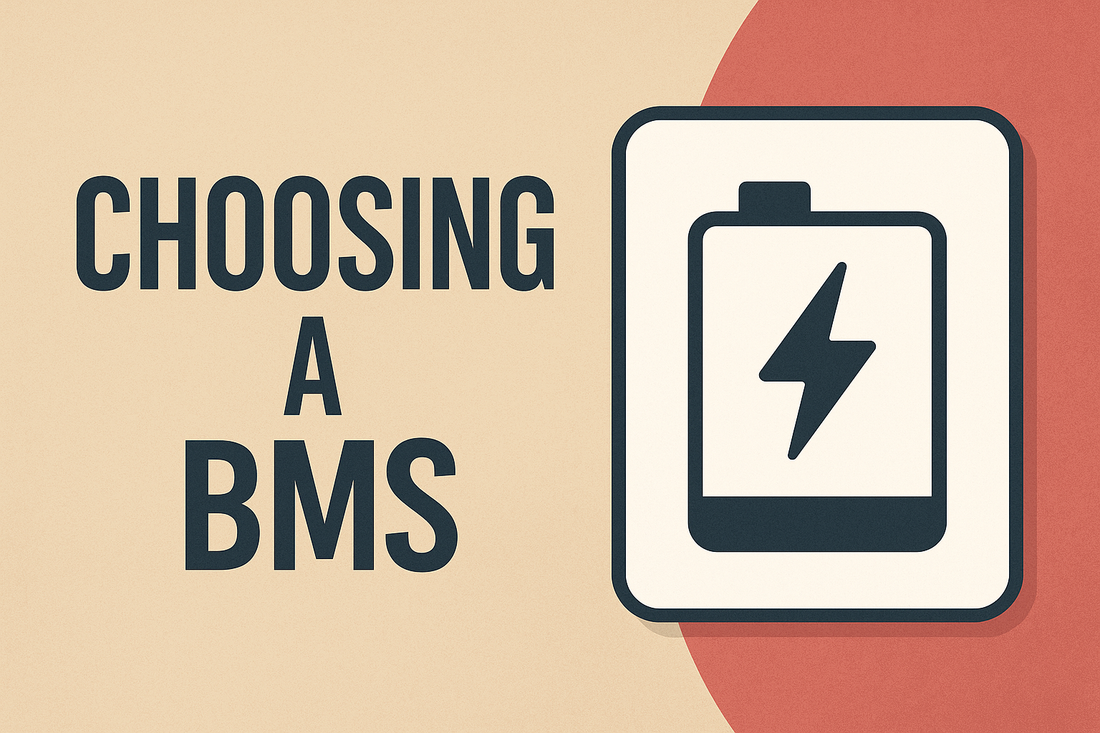
Guide to Choosing the Best Battery Management Systems (BMS) for DIY Energy Storage Projects
Share
How to Choose a Third-Party BMS: Seplos, JK, and Daly Compared
If you're building your own battery pack for solar energy storage, one of the most important decisions you'll make is choosing the right Battery Management System (BMS). The BMS is your battery’s brain—it balances cells, protects against unsafe voltage or current levels, and may even communicate directly with your inverter or charger.
But not all BMS systems are created equal. In this post, we’ll narrow it down to three of the most common choices in DIY and off-grid projects: Seplos, JK, and Daly. Each brand serves a different type of user and project scale.
Comparison Table
| Brand | Smart Monitoring | Active Balancing | Max Continuous Current | Inverter Communication | Ease of Setup | Price Range |
|---|---|---|---|---|---|---|
| Seplos | ✅ CAN & RS485 | ✅ Yes | Up to 200A | ✅ Closed-loop with select inverters | Moderate | $$$ |
| JK | ✅ Bluetooth & CAN | ✅ Yes | Up to 200A | ❌ Limited/None | Moderate | $$ |
| Daly | ⚠️ Basic UART (some models with Bluetooth) | ❌ No | Up to 200A+ | ❌ None | Easy | $ |
1. Seplos BMS – For Closed-Loop Communication with Inverters
Seplos BMS is becoming a standout for users who want a more integrated battery experience—something closer to a full rack battery. It’s one of the only third-party BMS systems that offers closed-loop communication with compatible inverters over CAN or RS485. This enables the inverter to read battery state-of-charge, temperature, voltage, and other data in real time and adjust charging behavior accordingly.
Confirmed integrations include:
- Growatt SPF 3000 (CAN)
- EG4 3000EHV-48 (CAN)
- Other hybrid inverters that support Seplos CAN protocols
Pros:
- Closed-loop CAN/RS485 support for inverter communication
- Active balancing built-in
- Clean and professional rack-mounted hardware options
- Suitable for high current systems
Cons:
- Higher cost
- Less widespread DIY community support compared to JK
- Requires correct CAN settings and inverter compatibility
2. JK BMS – For Tinkerers Who Want Full Control
JK BMS units are a favorite among DIYers who want detailed control and visibility into their battery packs. These units offer active balancing, high current support (up to 200A on some models), and customizable protection settings. They’re ideal for those building larger off-grid packs who want precision and data.
Pros:
- Active balancing improves lifespan of cells
- Bluetooth app with detailed data
- Supports CANBus (though compatibility is limited)
- Popular in the DIY community with lots of support
Cons:
- CANBus support is not always plug-and-play with inverters
- App can be clunky
- Requires manual configuration of many parameters
3. Daly BMS – For Simple, Reliable Protection
Daly BMS units are known for their straightforward design and ease of installation. They now offer models rated up to 200A and beyond, making them suitable for larger battery banks—not just small 100A systems. However, Daly still focuses on simplicity. These units generally lack active balancing and smart inverter communication, and some of the “smart” versions offer limited or basic app support.
Pros:
- Available in high current ratings up to 200A+
- Reliable and affordable
- Simple wiring and installation
- Solid basic protection for voltage, current, and temperature
Cons:
- No active balancing
- Limited smart features or app control
- No CAN/RS485 communication with inverters
Summary: Which One Should You Pick?
| If you want… | Go with… |
|---|---|
| Closed-loop inverter integration | Seplos |
| Detailed control and active balancing | JK |
| Lowest cost and simplest setup | Daly |
Learn More and Get Help
Still not sure which one fits your build? Browse our BMS collection on OGSolarStore.com or send us a message with your system specs. I also post videos on SolarJoeJoe YouTube, and I’ll be diving deeper into BMS testing and inverter integrations soon. Be sure to subscribe if you want to see these units in action.
